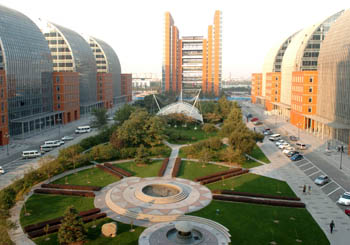| Tools: Save | Print | E-mail | Most Read |
| China Questions and Answers |
| Adjust font size: |
Q: China's foreign trade system was formed under the planned economy. Since the implementation of the reform and opening-up policies, China has carried out several reforms in the foreign trade system. What is the main content of these reforms? A: China attributes its rapid development in foreign trade to deep restructuring of its foreign trade system. As all know, after the founding of New China in 1949, China established a foreign trade system managed by the government and operated by specially appointed foreign trade companies, featuring a high degree of centralized and mandatory planning, to adapt to the product economy and unitary planned economic system of China. Under particular historical conditions, this kind of foreign trade system was conducive to avoiding an imbalance in international payments and to controlling import and export levels and the composition of commodities, thus protecting its young national economy. But this system had some shortcomings: exclusive operation and over-strict management preventing foreign trade companies from achieving self-management, self-development, self-disciplined and assuming sole responsibility for their profits or losses. Since 1978, in the process of economic restructuring, China has reformed its foreign trade system continuously with the purpose to establish a new system suitable to the socialist market economy and international trade standards. China's foreign trade system has been reformed in four stages. The first stage (1979-1987) was a transitional period of delegating power to lower levels. Main aspects of the reform in this period included that the majority of the provinces and enterprises were allowed to retain a certain proportion of foreign exchange earnings; some foreign trade companies were allowed to import non-restricted commodities without getting approval from the state economic and trade department; and the government operated a foreign trade agency system and reformed its foreign trade plan and financial system. By the mid-1980s, the former National Foreign Trade Corporation no longer dominated the foreign trade market. The second stage (1988-1990) involved fully implementing the foreign trade contracting system. In 1988, China decided to carry out the foreign trade contract responsibility system among all foreign trade companies. Main aspects were that the foreign trade companies at all levels – provincial, municipal, and autonomous regions as well as at the State level – contracted with the central government on their exchange earnings and corresponding subsidies. The contractual base would remain for three years. Quotas for the use of foreign exchange were lifted and the foreign exchange regulation market was opened. At the same time, the foreign trade planning system was further reformed. Except for 21 kinds of export commodities, which were still put under the unified management, the majority of commodities could be imported and exported by companies themselves in accordance with relevant government rules and regulations. During this stage enthusiasm of foreign trade companies for self-management boosted and foreign trade development was stimulated. The third stage (1991-1993) was a transitional period for the foreign trade operational mechanism. During this period, emphasis was laid on abolishing the export subsidy from State finances; allowing the integrated operation of foreign trade enterprises according to international practices; assuming sole responsibility for their profits or losses; and further widening their rights to use foreign exchange. These measures were conducive to maintaining appropriate growth in imports and provided good conditions for further expanding foreign trade relations. The fourth stage (1994-present) embraces reforms in foreign trade structure. In 1994, China carried out a new round of reform of foreign trade structure focusing on abolishing the dual-track exchange rate system. During this period, China trial-implemented the foreign trade operational registration system and the modern enterprise system among production enterprises in the five special economic zones of Shenzhen, Zhuhai, Shantou, Xiamen and Hainan. As a result a group of multi-functional transnational corporations have been developed, with foreign trade companies as their main body and trade-manufacturing-technology-commerce firms and production enterprises as their core. Small foreign trade enterprises in the five zones were reorganized into shareholding companies. At present, China has initially built up a foreign trade system in accordance with national economic development and the requirements of opening up. Meanwhile, the country is actively promoting the reform of the system of refunding taxes on exported goods, which will create a better condition for deepening foreign trade system reform.
Attracting foreign investment is an essential part of China's opening-up policy. The pictured shows the Tianjin Economic and Development Area. |
| Tools: Save | Print | E-mail | Most Read |
 |
| Related Stories |
|
Product Directory China Search |
Country Search Hot Buys |
